Having landed in Christchurch in mid-July, I was brimming with anticipation and excitement. Now with over half my placement completed, I must say it has been a fantastic experience so far.
Coming from a dairy farm in Co Kildare, I considered myself accustomed to milking, calving and all the other factors associated with busy springs. However, nothing could prepare me for the scale of dairy farming in New Zealand.
Birchdale Dairies is a spring-calving, irrigated, low cost operation milking in excess of 900 Holstein Friesian X Jersey cows this season on 207 hectares.
Cows were wintered off the milking platform outside grazing kale or fodder beet supplement with silage. One of my first tasks was to move the strip fences, feeding the cows and setting up a fresh break for the following day.
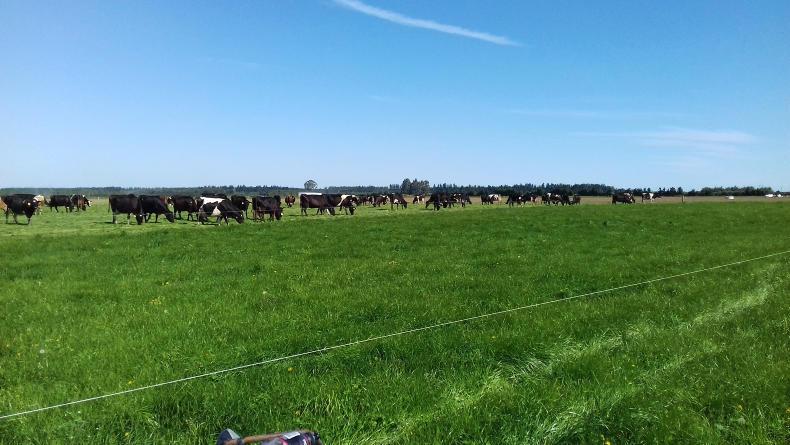
Winding up the reels, I was taken aback; firstly, by the number of cows that were in the mobs, often close to 200 and secondly, at the hardiness of these animals.
Though the land is quite stony and free draining, the cows endured cold, wet weather in mucky paddocks with little or no shelter, yet they remained healthy, and thrived over the winter months.
Seeing them standing in the fields, even the biggest critics of the cross-bred cow would begrudgingly admit some admiration for their robustness.
Calving with heifers had already commenced at the time of arrival and by 5 August, the machine roared into life as the cows began to drop calves.
Maximising grass intake and utilisation is paramount
On peak days, 30 or more cows calved.
Springer mobs were on grass only by early-August and cows were only allocated 9kg DM/head to prevent milk fever.
Calves were collected twice daily from the springer paddock. Once again, I was taken back by the vigour in these animals as fresh calves were standing in minutes, to my dismay however, as a I ran around the paddock in an attempt to catch them.
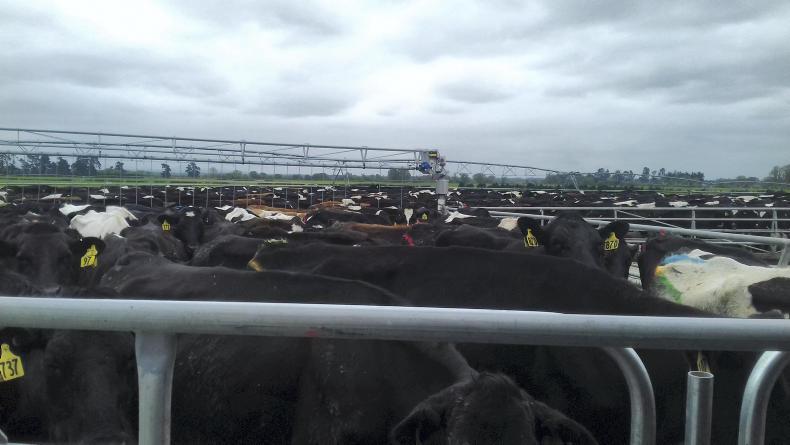
The dams were drafted out in the morning as the cows were allocated a fresh break. Fresh cows spent roughly three days in the colostrum mob before moving into the milking herd.
Calving has just finished with 910 cows being milked through our 60-bail rotary.
Some 580 of these cows make up what’s known as the A-Team. These are our top cows, mature and in solid condition producing the bulk of the farms milk.
The remaining 330 cows make up the B-Team. This mob is made up of heifers and skinny cows.
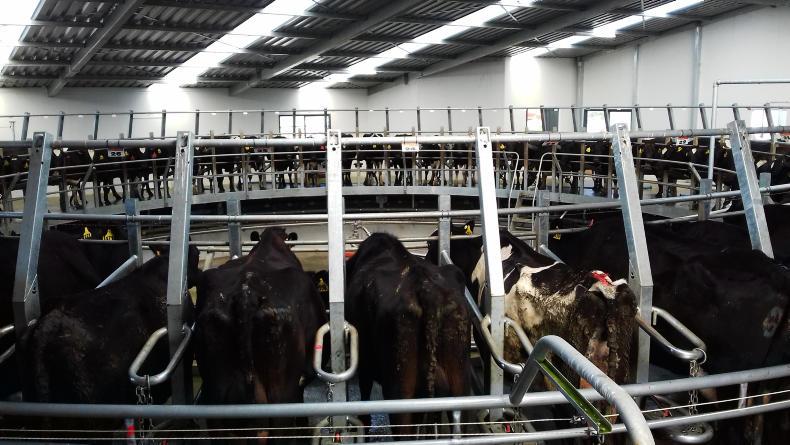
Since the 26 September, these cows have been on once-a-day milking in an attempt to build their condition and give them the best chance of going back in calf.
The farm buys in all its replacements and sells a proportion of the low performing or low genetic merit cows yearly, hence there is serious importance in getting as many cows in calf as possible.
Although the calving season is just finished, the focus turned to breeding a number of weeks ago. Tail painting for pre-breeding heat detection, metrichecking cows for signs of metritis and planning synchrony programs has been in the pipeline for some time now.
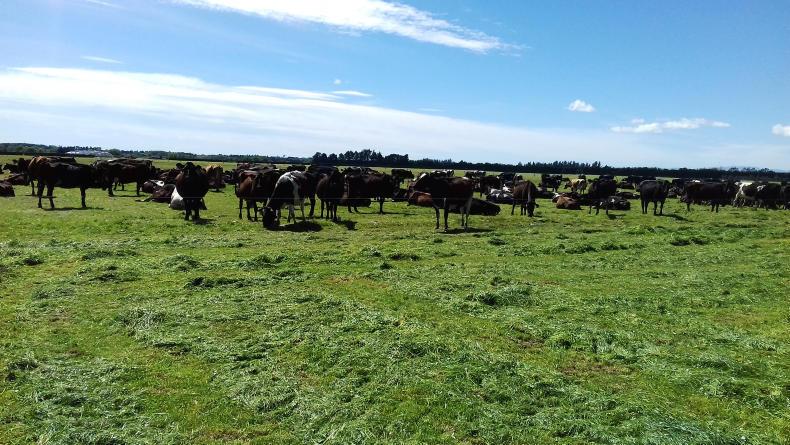
Already it is obvious to me how important good fertility is for the success of the low-cost system.
The cost of production is approximately $2.90/kg of milk solids (MS).
Farming also seems more simplistic here. Feed the cows grass and milk them. That’s it.
This is considered quite low in Canterbury standards. Grass management is a massive part of controlling costs.
There are no in-parlour feeders and although approximately 500kg dry matter (DM) of supplement is fed to the cows, it is still mainly grass-based in the form of silage or buffer grazing. Cows graze paddocks from a neighbouring farm and they are paid 20c(NZD)/kgDM basis).
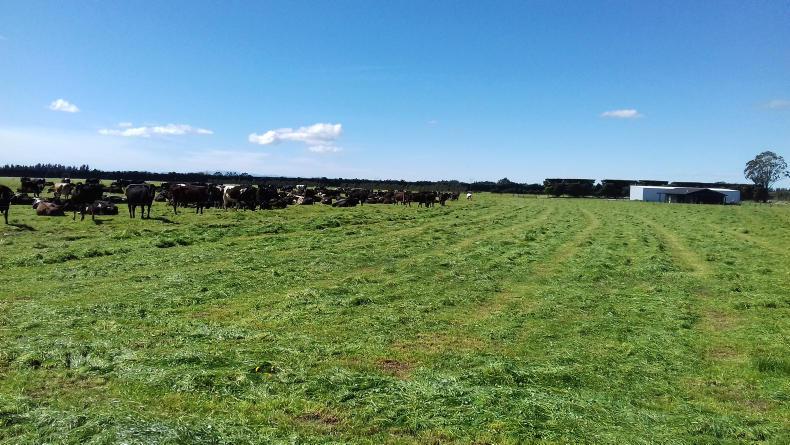
The A-Team is eating approximately 18kgDM/head/day while the B-Team is eating 16kgDM/head/day.
Maximising grass intake and utilisation is paramount. With a stocking rate in excess of four cows/ha this isn’t always easy. The aim is to have cows on a 24 day round heading into covers of 2,000kg DM/ha and leaving only 50kgDM/ha behind.
I was impressed by how well the cows grazed out on the paddocks, eating right down to the previous grazing.
Erik Lenssen the farm manager said: “It’s all down to training them as heifers” and that “good residuals breed good residuals.”
Staying on top of the grass all the time to ensure good quality and maximum utilisation.
The fulcrum of the operation is moving cows just before they become hungry, making them eat all the grass that is there but moving them on immediately once this has been achieved.
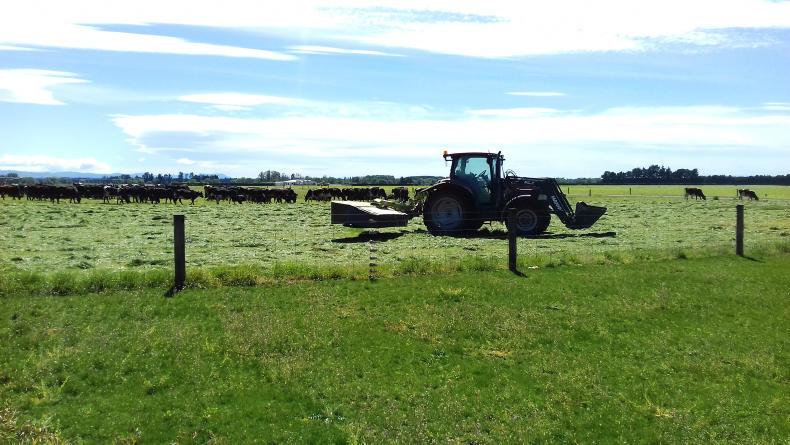
Farm walks are carried out at least once a week to stay on top of growth.
Currently the farm is producing 18,400 litres/day at 4.68% fat and 3.73% protein or 15,475kgMS. The somatic cell count is approximately 110,000.
Two of the biggest factors associated with dairying in Canterbury are scale and simplicity and you are reminded constantly of this. As often as it now happens, it still gives me goosebumps.
Leaving the paddock with the last bunch of cows I look up the track at a train of cows that snakes its way towards the parlour on the top of the hill.
I haven’t even left the paddock but already the first cows are entering the collecting yard, almost a kilometre away. It is a sight that will stay with me for many years to come.
The simple things in life are cheaper
Farming also seems more simplistic here. Feed the cows grass and milk them. That’s it.
Obviously, cows have to be calved and bred but outside these periods, which are only eight to 10 weeks, it’s pretty straight forward. You’re finished between 5pm to 5.30pm and the day is yours. Everyone has time off and nobody is tied to the farm.
The Kiwi farmer’s greatest assets are his motorbike, his reels and his standards. Having never rode a two-wheeler before coming out here, I had to become very familiar with them very quickly.
It is the main mode of transportation here and it’s probably down to their versatility.
On these machines there is no need to stop to open gapways and you are not confined to roadways. Driving over wires is a skill of sorts but a necessity and allows you to cross the farm quickly.
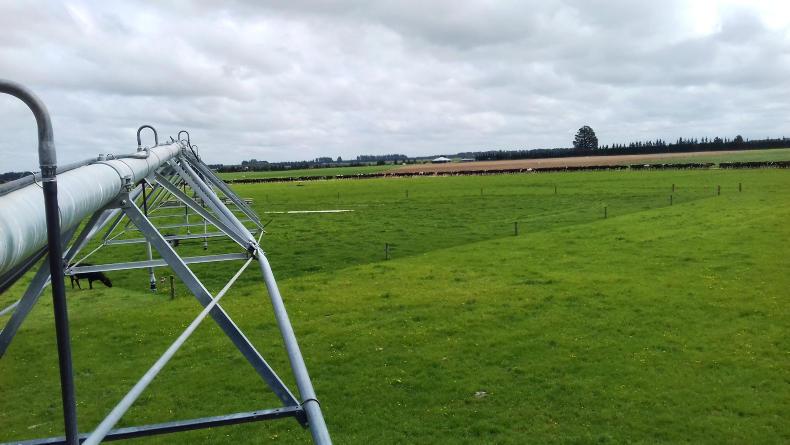
Reels of electric wire and temporary fence posts (standards) are essential, there is no other word for it.
Whether it’s for strip-grazing paddocks, back fencing to boost growth, limiting damage in wet weather, drafting out cows there is not a day that goes by that you are not using them. I will certainly appreciate them more when I go home.
The only downside to my time spent here has been the weather. Canterbury has received 125% to 230% of its allocated rain for September and at the time of writing this, approximately 80mm of rain has fallen in two days.
However, I remain optimistic. When the sun did shine on the fine days, temperatures hit 25°C.
Overall, the experience so far has been unbelievable. For anyone who has an interest in dairy farming I could not recommend a trip to Canterbury enough.
Read more
Kiwi milk production dips ahead of peak
Agri jobs: dairy workers remain in demand
Having landed in Christchurch in mid-July, I was brimming with anticipation and excitement. Now with over half my placement completed, I must say it has been a fantastic experience so far.
Coming from a dairy farm in Co Kildare, I considered myself accustomed to milking, calving and all the other factors associated with busy springs. However, nothing could prepare me for the scale of dairy farming in New Zealand.
Birchdale Dairies is a spring-calving, irrigated, low cost operation milking in excess of 900 Holstein Friesian X Jersey cows this season on 207 hectares.
Cows were wintered off the milking platform outside grazing kale or fodder beet supplement with silage. One of my first tasks was to move the strip fences, feeding the cows and setting up a fresh break for the following day.

Winding up the reels, I was taken aback; firstly, by the number of cows that were in the mobs, often close to 200 and secondly, at the hardiness of these animals.
Though the land is quite stony and free draining, the cows endured cold, wet weather in mucky paddocks with little or no shelter, yet they remained healthy, and thrived over the winter months.
Seeing them standing in the fields, even the biggest critics of the cross-bred cow would begrudgingly admit some admiration for their robustness.
Calving with heifers had already commenced at the time of arrival and by 5 August, the machine roared into life as the cows began to drop calves.
Maximising grass intake and utilisation is paramount
On peak days, 30 or more cows calved.
Springer mobs were on grass only by early-August and cows were only allocated 9kg DM/head to prevent milk fever.
Calves were collected twice daily from the springer paddock. Once again, I was taken back by the vigour in these animals as fresh calves were standing in minutes, to my dismay however, as a I ran around the paddock in an attempt to catch them.

The dams were drafted out in the morning as the cows were allocated a fresh break. Fresh cows spent roughly three days in the colostrum mob before moving into the milking herd.
Calving has just finished with 910 cows being milked through our 60-bail rotary.
Some 580 of these cows make up what’s known as the A-Team. These are our top cows, mature and in solid condition producing the bulk of the farms milk.
The remaining 330 cows make up the B-Team. This mob is made up of heifers and skinny cows.

Since the 26 September, these cows have been on once-a-day milking in an attempt to build their condition and give them the best chance of going back in calf.
The farm buys in all its replacements and sells a proportion of the low performing or low genetic merit cows yearly, hence there is serious importance in getting as many cows in calf as possible.
Although the calving season is just finished, the focus turned to breeding a number of weeks ago. Tail painting for pre-breeding heat detection, metrichecking cows for signs of metritis and planning synchrony programs has been in the pipeline for some time now.

Already it is obvious to me how important good fertility is for the success of the low-cost system.
The cost of production is approximately $2.90/kg of milk solids (MS).
Farming also seems more simplistic here. Feed the cows grass and milk them. That’s it.
This is considered quite low in Canterbury standards. Grass management is a massive part of controlling costs.
There are no in-parlour feeders and although approximately 500kg dry matter (DM) of supplement is fed to the cows, it is still mainly grass-based in the form of silage or buffer grazing. Cows graze paddocks from a neighbouring farm and they are paid 20c(NZD)/kgDM basis).

The A-Team is eating approximately 18kgDM/head/day while the B-Team is eating 16kgDM/head/day.
Maximising grass intake and utilisation is paramount. With a stocking rate in excess of four cows/ha this isn’t always easy. The aim is to have cows on a 24 day round heading into covers of 2,000kg DM/ha and leaving only 50kgDM/ha behind.
I was impressed by how well the cows grazed out on the paddocks, eating right down to the previous grazing.
Erik Lenssen the farm manager said: “It’s all down to training them as heifers” and that “good residuals breed good residuals.”
Staying on top of the grass all the time to ensure good quality and maximum utilisation.
The fulcrum of the operation is moving cows just before they become hungry, making them eat all the grass that is there but moving them on immediately once this has been achieved.

Farm walks are carried out at least once a week to stay on top of growth.
Currently the farm is producing 18,400 litres/day at 4.68% fat and 3.73% protein or 15,475kgMS. The somatic cell count is approximately 110,000.
Two of the biggest factors associated with dairying in Canterbury are scale and simplicity and you are reminded constantly of this. As often as it now happens, it still gives me goosebumps.
Leaving the paddock with the last bunch of cows I look up the track at a train of cows that snakes its way towards the parlour on the top of the hill.
I haven’t even left the paddock but already the first cows are entering the collecting yard, almost a kilometre away. It is a sight that will stay with me for many years to come.
The simple things in life are cheaper
Farming also seems more simplistic here. Feed the cows grass and milk them. That’s it.
Obviously, cows have to be calved and bred but outside these periods, which are only eight to 10 weeks, it’s pretty straight forward. You’re finished between 5pm to 5.30pm and the day is yours. Everyone has time off and nobody is tied to the farm.
The Kiwi farmer’s greatest assets are his motorbike, his reels and his standards. Having never rode a two-wheeler before coming out here, I had to become very familiar with them very quickly.
It is the main mode of transportation here and it’s probably down to their versatility.
On these machines there is no need to stop to open gapways and you are not confined to roadways. Driving over wires is a skill of sorts but a necessity and allows you to cross the farm quickly.

Reels of electric wire and temporary fence posts (standards) are essential, there is no other word for it.
Whether it’s for strip-grazing paddocks, back fencing to boost growth, limiting damage in wet weather, drafting out cows there is not a day that goes by that you are not using them. I will certainly appreciate them more when I go home.
The only downside to my time spent here has been the weather. Canterbury has received 125% to 230% of its allocated rain for September and at the time of writing this, approximately 80mm of rain has fallen in two days.
However, I remain optimistic. When the sun did shine on the fine days, temperatures hit 25°C.
Overall, the experience so far has been unbelievable. For anyone who has an interest in dairy farming I could not recommend a trip to Canterbury enough.
Read more
Kiwi milk production dips ahead of peak
Agri jobs: dairy workers remain in demand













 This is a subscriber-only article
This is a subscriber-only article














SHARING OPTIONS: